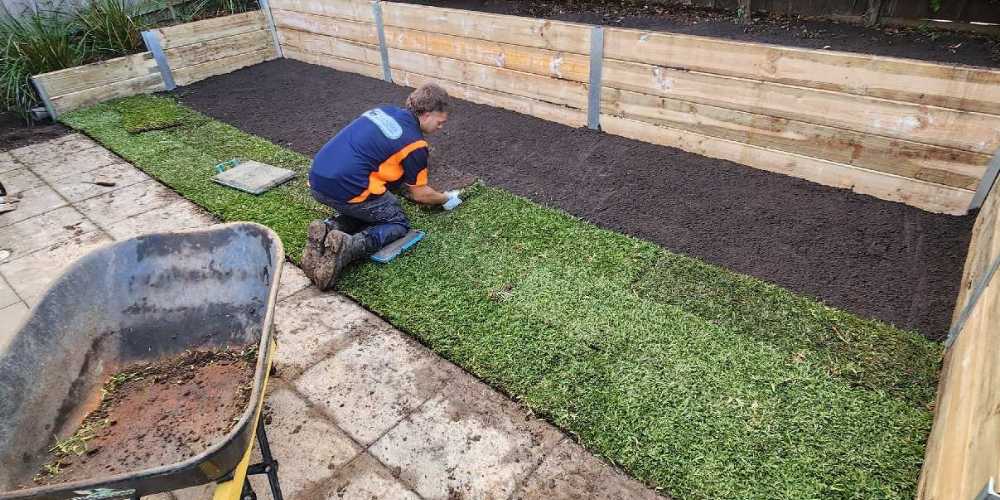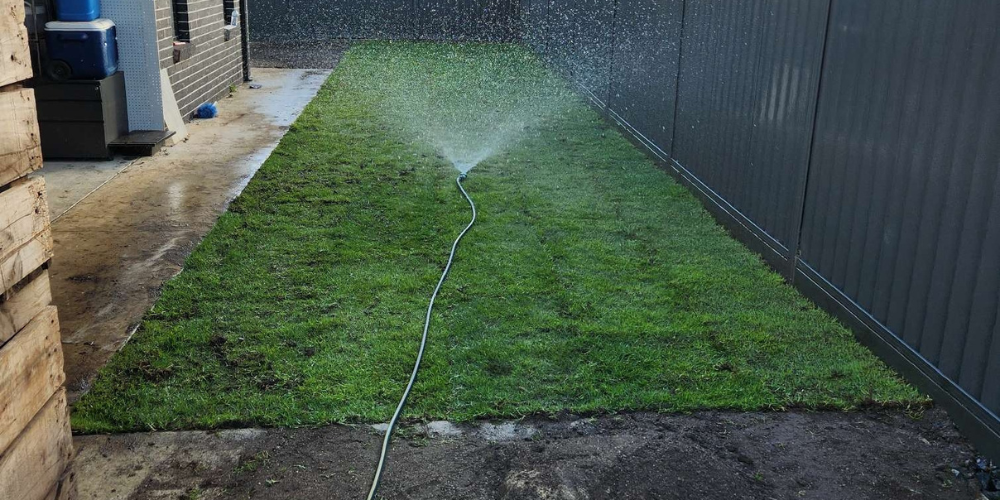Essential Steps to Plan Your Backyard Redesign
In addition to being an outside area, your backyard serves as an extension of your house and a blank canvas for creativity. A well-planned backyard may transform your outside space into a sanctuary representing your lifestyle and tastes, whether you envision tranquil retreats, vibrant entertainment areas, or flourishing plants.
So, how do you start for a backyard design makeover?
Let’s find out!

What is a Backyard Design?
Obviously, a purposeful planning and layout of outdoor areas in the back of a residential home is referred to as a backyard design. A useful, visually appealing, and well-organized outside space that meets the homeowner’s needs, interests, and lifestyle is the aim of backyard design.
A backyard design is generally a comprehensive strategy for developing your outdoor living area that aligns with your vision and fulfils your practical, aesthetic, and lifestyle requirements. A backyard may be a lovely and useful addition to your house by carefully balancing architecture, landscape, and outdoor furniture.
Importance of a Well Design Backyard
You know, I used to take my backyard for granted. It was just a patch of grass and a few bushes – nothing special. But then, I discovered the magic of a well-designed backyard, which completely changed how I view my outdoor space. Let me share why having a well-designed backyard is so incredibly important.
- A Private Retreat: Imagine a quiet area with a warm chair, a good book, and rustling leaves in the distance. A well-designed garden provides a private refuge to unwind, rest, and revitalize. It turns into your haven away from the everyday commotion.
- Entertainment Hub: The new look of my backyard featured a roomy patio and some stylish outdoor furnishings. It is now the preferred location for throwing parties, dinners, and game evenings with friends and family. It’s like having a large outdoor extension of my living room!
- Increasing Property Value: You’d be shocked at how much the value of your home may increase with a well-planned backyard. Beautiful landscaping in your backyard may be a huge selling point if you ever decide to sell your house. The thought of a ready-to-entertain outdoor sanctuary appeals to buyers.
- Wellness and Good Health: Spending time in a well-planned garden promotes health and well-being. Outside in your gorgeous area is excellent for the body and spirit, whether gardening, practising yoga, or getting vitamin D.
- Relationship with Nature: You may feel more at home with nature if your garden is full of vibrant flowers, lush vegetation, and tranquil bird noises. It’s like having a small portion of nature within your own house.
- Zone of Family Fun: A well-planned garden might be a child’s wonderland if you have children. It’s become a location for countless giggles and memories. It’s a terrific method to get kids outside and away from devices.
- Reduces Stress: Sometimes, all you need to decompress from the stresses of life is to go outside and relax on your lawn. Being surrounded by natural beauty and vegetation may be comforting and aid in lowering stress.
- Privacy and Serenity: You can make your backyard seem private and tranquil with skilful landscaping and the appropriate design features. It serves as your haven from the outer world.
How To Plan Your Backyard Design
1. Set Specific Goals:
Start by outlining your goals for the backyard in detail. Choose how you wish to utilize the area. Is it a garden, a play space for kids, a relaxing retreat, an entertainment area, or a combination of these? The first step in designing your garden is to establish your goals.
2. Take Site Measurements:
Be careful to take precise measurements of your outdoor area. Draw a rough outline or map of your yard, noting any permanent structures, fences, and existing features like trees. This phase gives your design a clean slate.
3. Set a Realistic Budget:
Decide how much money you are comfortable spending on your garden renovation. Consider all prospective expenses, such as labour, supplies, permits, and continuing upkeep. Making wise design decisions requires being realistic about your financial situation.
4. Gather Design Inspiration:
Look for inspiration from various places, including websites, social media platforms, home and garden periodicals, and nearby gardens. Gather pictures and concepts that fit your vision, then use them as a guide to create your backyard layout.
5. Create a Functional Layout:
Create useful zones in your garden to help you plan its arrangement. Set aside spaces for eating, relaxing, playing, gardening, and any other particular activities you have in mind. Make sure the layout makes sense while considering aesthetics and usefulness.
6. Choose Materials and Elements:
Decide on the hardscaping (such as pavers and decks), landscaping (such as plants and mulch), and outdoor furniture materials. Consider how well they go with your design style, how durable they are, and how much upkeep they demand. Select components that complement your overall design philosophy.
7. Create a project schedule:
Make a thorough schedule that specifies when each stage of the design and building of your backyard will take place. Be honest about how long it will take to design, get the necessary permissions, and finish the job. A timetable guarantees that the project moves along smoothly and assists you in maintaining organization.
And if all else fails. Ask for professional help! And if, at any point, things start feeling overwhelming or if you need help figuring out where to turn, feel free to ask for professional help. Whether it’s a landscape architect, a garden designer, or a contractor, these experts can provide valuable guidance, turn your ideas into reality, and ensure your backyard design project goes off without a hitch. Sometimes, bringing in a pro is the best way to ensure your outdoor dream space comes to life just as you imagined. So, remember, professional help is always there when you need it!
Maintenance and Inspection
Frequent upkeep and observation are crucial for your sloping backyard to remain healthy and beautiful after landscaping. Establish a care schedule that includes regular watering, trimming, and fertilizing. To guarantee that erosion control techniques are successful over time, monitor them and make modifications as necessary. You may maintain the quality of your slope landscaping by being watchful and diligent in your upkeep efforts.
DIY vs Professional - Which is the Smarter Choice?

The decision to DIY (Do It Yourself) or hire a professional for a job relies on several variables, including the project’s complexity, your degree of experience, the amount of time you have available, your budget, and your personal preferences. Let’s examine the benefits and drawbacks of each alternative to assist you in making the best decision:
DIY (Do It Yourself):
Pros
- Cost Savings: Cost reduction is one of the main benefits of DIY projects. By performing the task yourself, you can reduce your labour expenses.
- Control and Creativity: You have total control over the project when you do it yourself. You can carry out your plan and alter it as necessary. It’s an opportunity for you to be creative.
- Learning Opportunity: DIY tasks may be a great way to acquire new skills. You increase your knowledge and skill set, which benefits future undertakings.
- Flexible Timeline: Working on your timetable could be useful if you have limited time or prefer a slower-paced project.
Cons:
- Expertise and Knowledge: Not every project is appropriate for DIY. Complex activities could call for abilities and information you don’t have, resulting in errors and safety risks.
- Time-Consuming: DIY tasks can take a long time, especially if you are learning as you go. This may be frustrating if you’re anxious to appreciate the result.
- Risk of Errors: DIYers who are inexperienced may create blunders that later require expensive repairs or changes.
- Limited Resources: DIYers might need easy access to the specialized tools, gear, and supplies that experts do.
Professional:
Pros:
- Expertise: Experts bring years of knowledge and experience to the table. They have received training in managing complicated projects successfully and efficiently.
- Time Efficiency: Project deadlines can be greatly shortened by hiring experts. They are effective workers who can do jobs far faster than a DIYer could.
- Quality Control: Professionals are more likely to provide a polished, high-quality outcome, lowering the likelihood of mistakes and expensive corrections.
- Access to Resources: They have access to various equipment, supplies, and contacts in the business, guaranteeing that your project is carried out with the greatest resources.
Cons:
- Cost: Hiring specialists often have a greater upfront cost due to labour and knowledge. However, the level of effort and time savings make this expense acceptable.
- Less Control: When dealing with pros, you could have less creative influence over the project since they will adhere to recognized industry norms and procedures.
- Communication: Effective communication with specialists is crucial to guarantee that your vision is understood and implemented properly.
Which Is the Smarter Choice?
Depending on your unique situation and the project’s requirements, hiring pros or doing it yourself is the best option. DIY may be a satisfying and cost-effective option for simple, quick jobs when you have the required knowledge and tools. However, employing specialists is frequently the wiser course of action to assure quality, safety, and efficiency for complicated, time-sensitive, or high-stakes projects.
Ultimately, it’s a good idea to evaluate your capabilities, consider how hard the project is, and balance the prospective costs and advantages before choosing. In other circumstances, a hybrid strategy—where you manage some areas of the project while hiring experts to handle others—may also be an effective choice.
Frequently Asked Questions
Depending on your local laws and the size of your undertaking, you could require permissions for specific project components, including erecting structures or making significant modifications to the landscape. Contact your local government or homeowner’s organization to learn more about the exact criteria.
Consider soft ground coverings, like rubber mulch or grass, under play equipment to make your backyard fun and safe for kids. If necessary, put up childproof fencing, avoid risks like sharp items, and designate play zones with toys and playthings suitable for children’s ages.
Regarding privacy concerns, utilizing carefully positioned fences, bushes, or trellises may be necessary to block off undesired views. The design and location of your backyard’s outdoor furniture and lounging spaces can also provide seclusion.
Your freshly renovated backyard must need regular upkeep to remain in good shape. Watering, trimming, weeding, and other maintenance chores help maintain the area attractive and useful over time.
Conclusion
Planning a backyard redesign is an exciting journey that can transform your outdoor space into a functional and beautiful oasis. Defining goals, setting a budget, gathering inspiration, and creating a well-designed design plan is crucial. You can DIY or seek professional assistance based on your skills, project complexity, and budget. Ensuring privacy, sustainability, and accessibility, as well as considering the needs of your family and pets, are important factors to keep in mind. Regular maintenance will help your redesigned backyard thrive over time. Following the steps and guidelines, you can create an outdoor haven that reflects your personality, preferences, and creativity.
